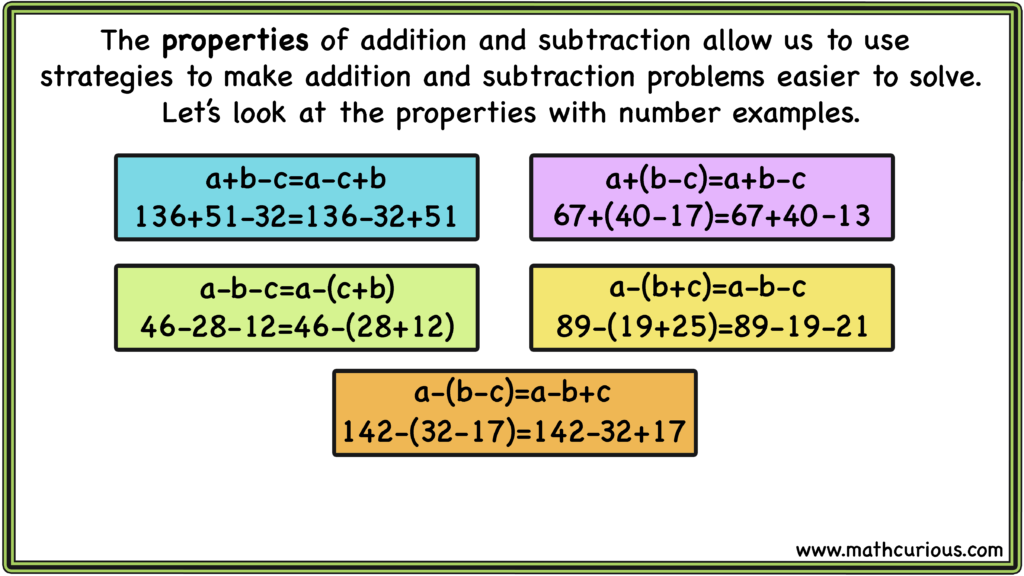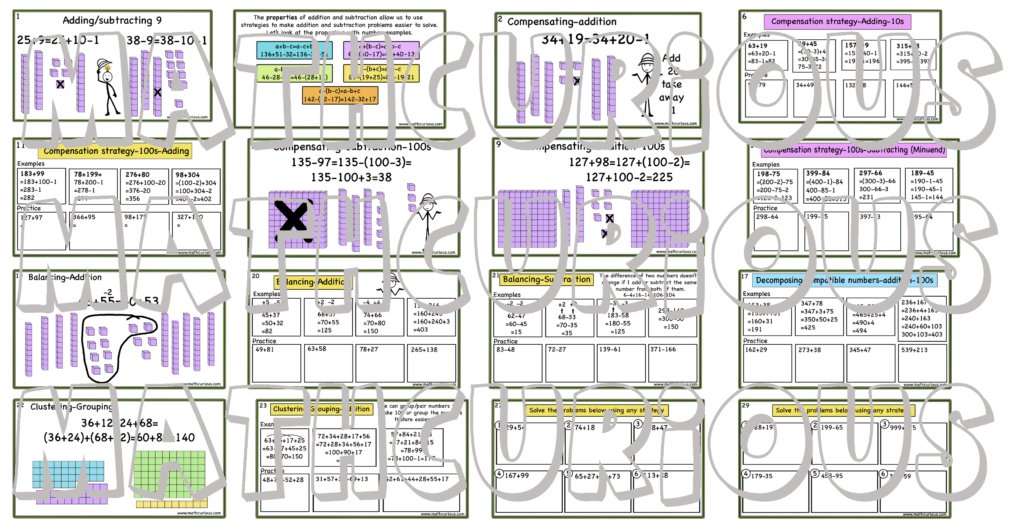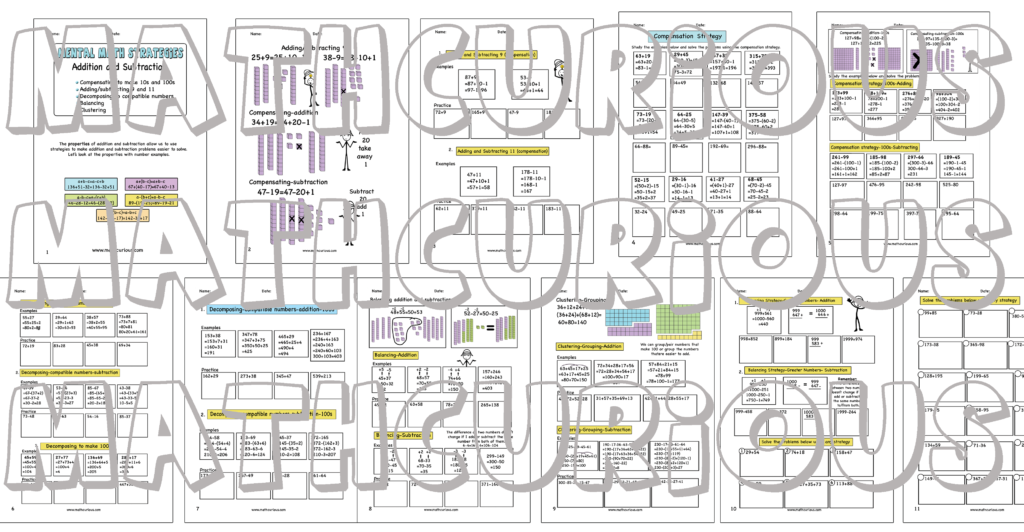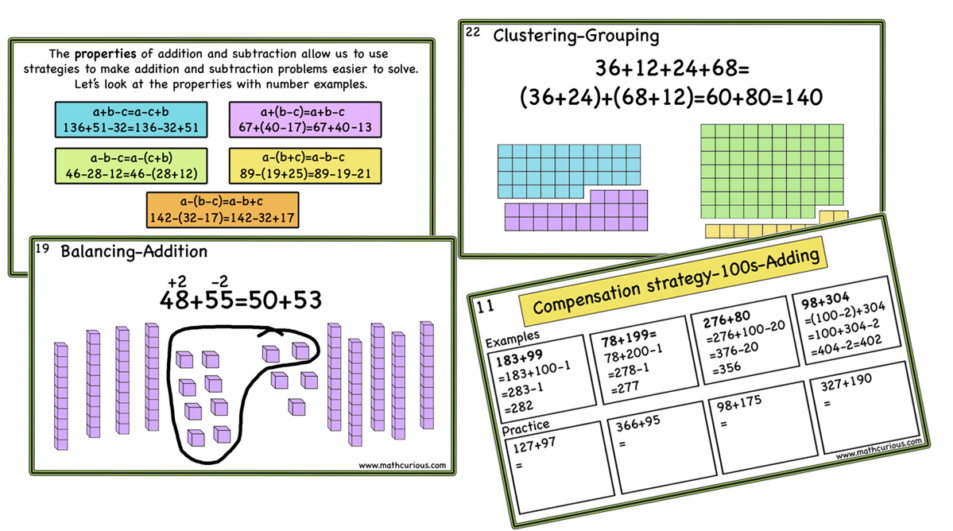Using Mental Math strategies means solving a math problem mentally using a conceptual understanding of the numbers. We teach mental math strategies like making 10, splitting, and regrouping in grades 1 and 2, however, I think it is important to teach strategies to older students as well. I noticed that once the students learn the algorithms of 2 (and up)-digit addition and subtraction they tend to avoid solving problems mentally, even if the solution is quite obvious. I recently gave my new students the expression 245+57 to solve. Almost all of them wrote the numbers one under the other (some incorrectly) and used the algorithm to solve the problem. Very few students solved it mentally. 245+55+2=302
Teaching Mental math Strategies to students in grades 3 and up is very important as it develops their flexible thinking and boosts their confidence in math. Being able to use the addition and subtraction properties to apply mental math strategies shows a deep conceptual understanding that will, later on, be applied to more advanced concepts.
Some students discover mental math strategies through practice, naturally, however, most of the students need to be taught the strategies and practice applying them to selected problems. There is a special joy in discovering a strategy, a “trick”. We can guide our students to “discover” a strategy by providing appropriate problems and discussing them.
Properties
Mental Math strategies come from using the properties of the numbers and operations in our favor, in a way that makes solving the problem “easier”. Make sure that your students understand the properties of addition and subtraction below.

Visuals and Manipulatives
Using visuals and manipulatives reinforces the strategies and helps all students gain a deep understanding. We can solve problems like 35-9, 363+29, and 472-98 using manipulatives to demonstrate a strategy.


Relations and connections
Using number relations and connections enables students to use already-known problems to solve new ones. For example, If 26+4=30 then 26+7 will be? If 14+36=50 then 14+35=? If 382+100= 482 then 382+99=? 14+36=50 then 14+35=?
Mental Math strategies as Math Talks
Mental Math strategies make great math talks. Present a problem and ask students how to solve it. Can we do it mentally? Present a solution and ask them to explain. Discuss the different solutions and find the connections. Introduce strategies through math talks and apply them to more problems. Ask questions like: Which mental math strategy is for this problem? Why? I always include mental math strategies in math talks and I find that it helps the students see beyond the algorithm and look for relations in numbers.

I have created a collection of activity cards to practice mental math strategies for addition and subtraction with visuals, examples, and practice questions for the strategies:
- Compensation 10s 100s addition, subtraction
- Decomposing to create compatible numbers 10s 100s addition subtraction
- Balancing
- Clustering
The collection includes 30 slides or 30 print task cards and you can find them below.
Bundle of both google slides and print task cards Mental math strategies addition-subtraction


Find the multiplication and division mental math strategies posts below
Mental Math strategies-Multiplication
Mental Math Strategies Division
Bundle of all mental Math strategies, Addition, Subtraction, Multiplication, and Division google slides

